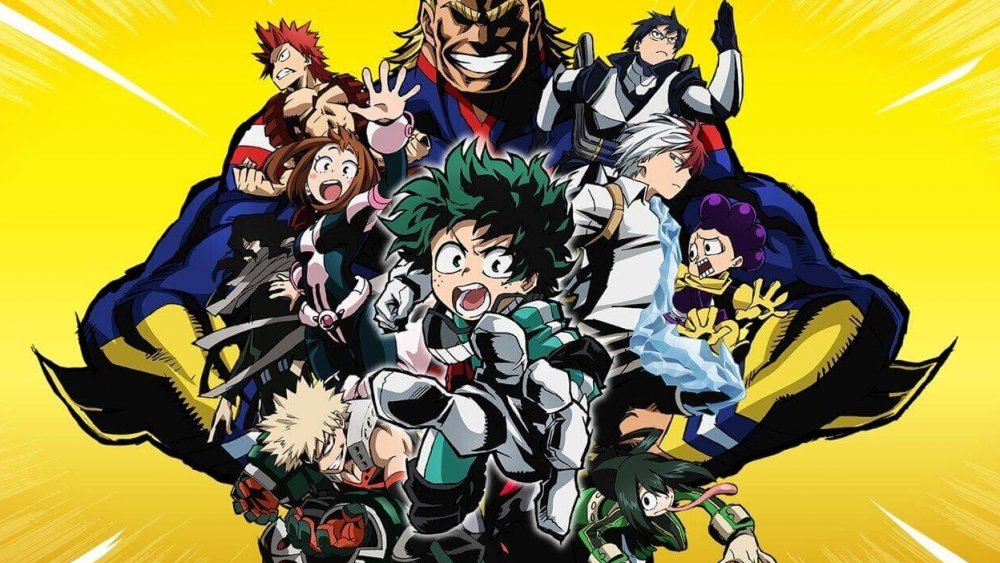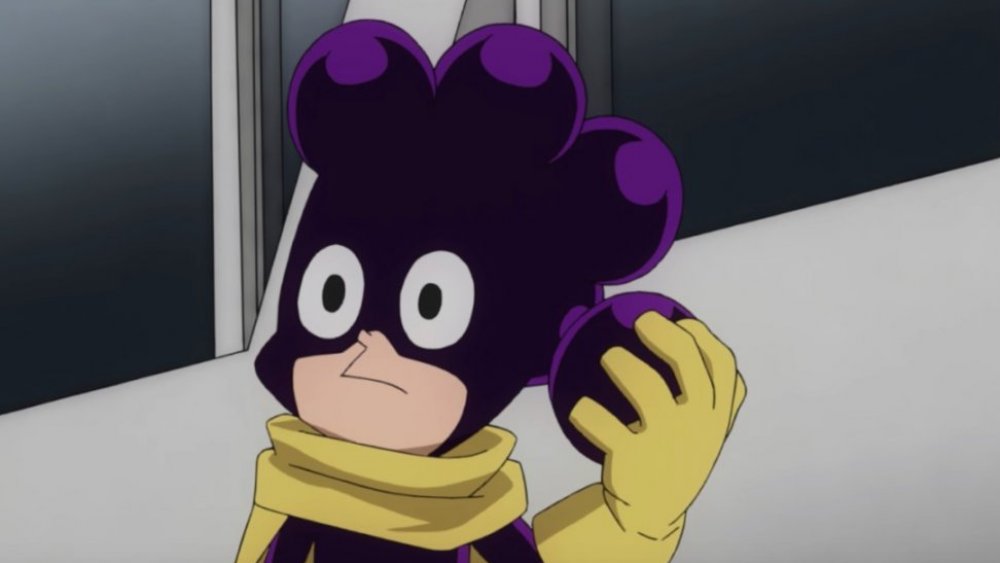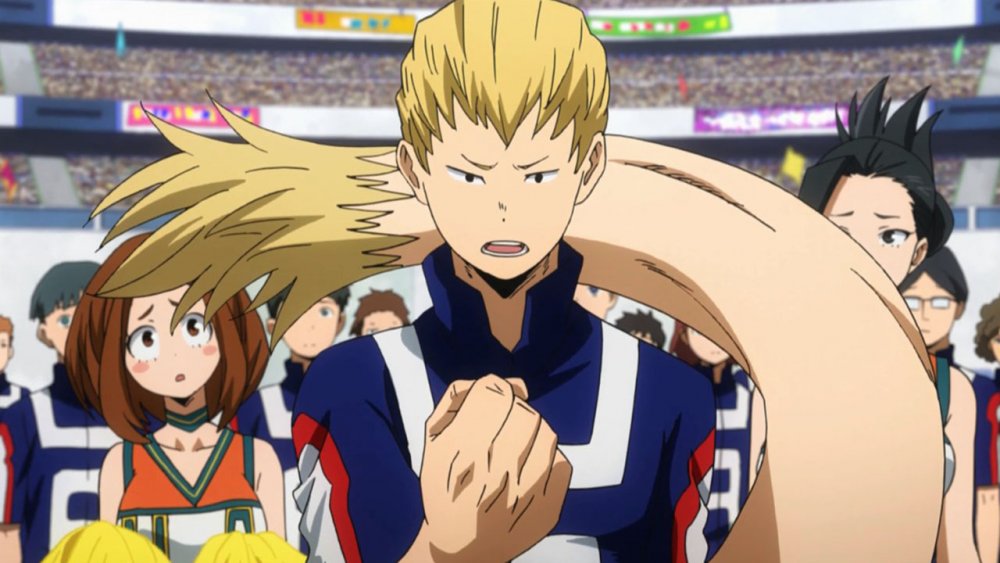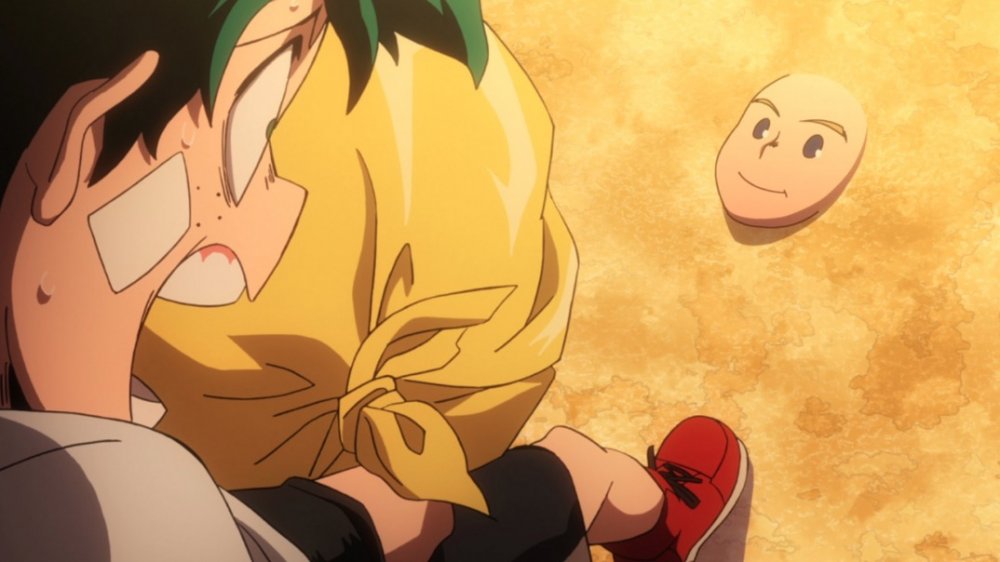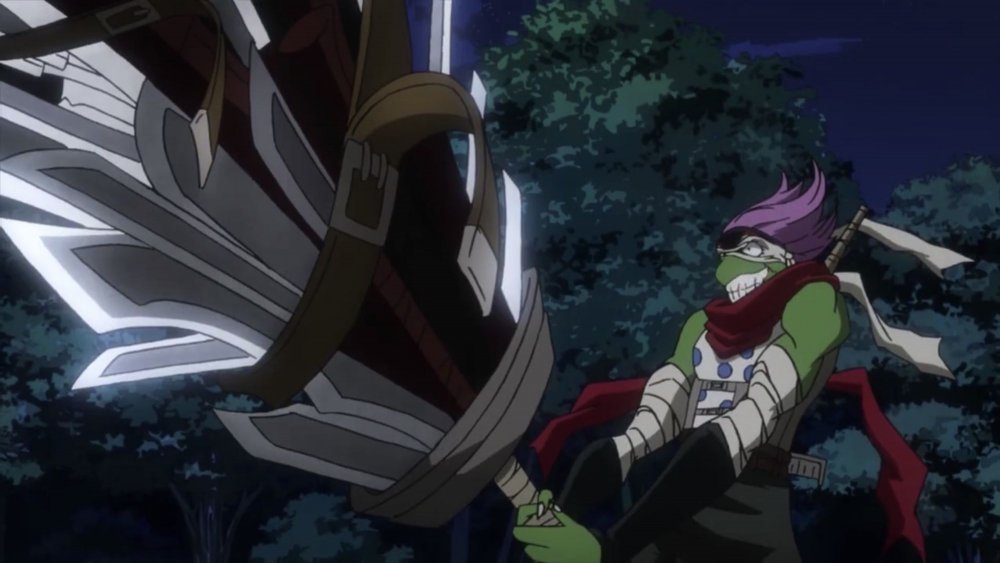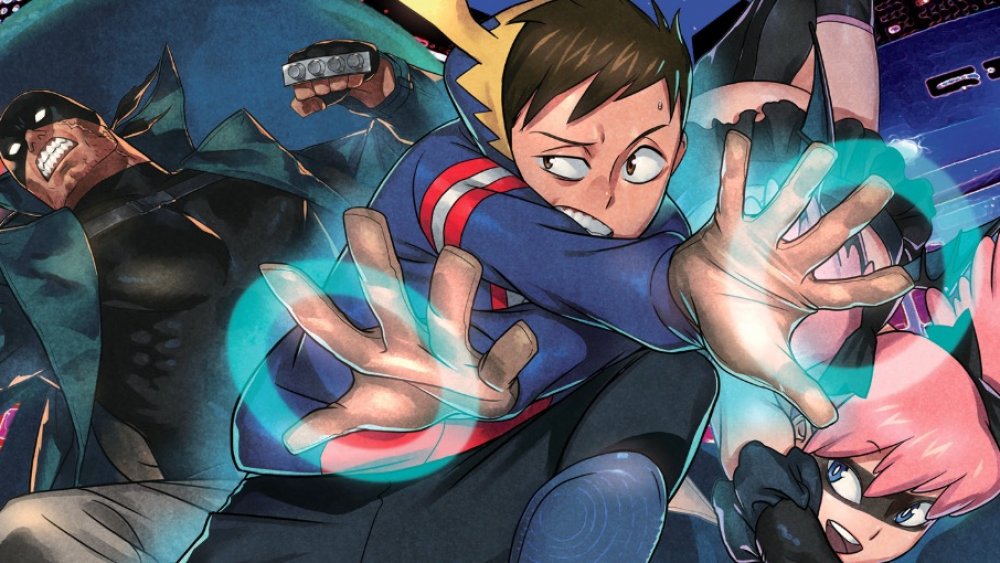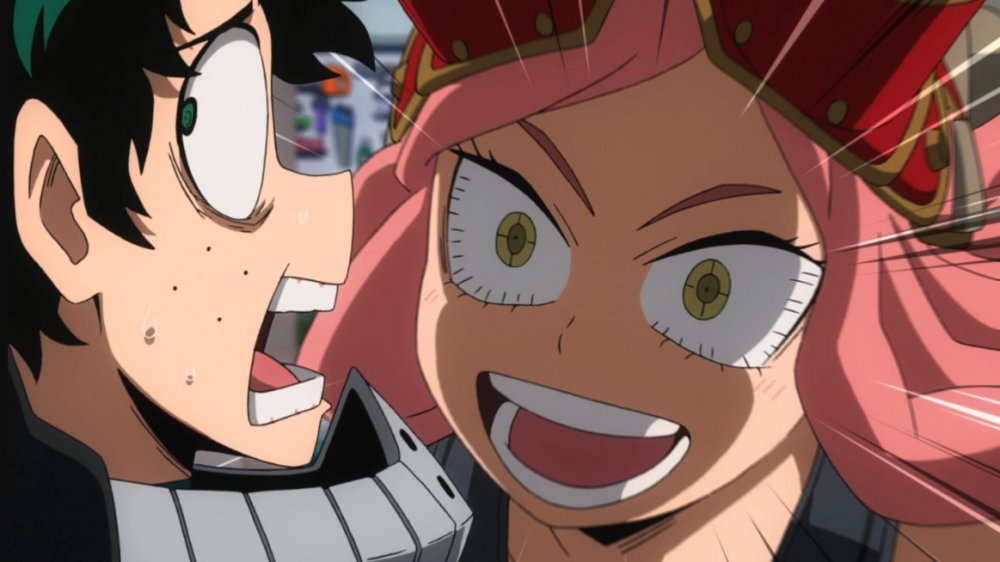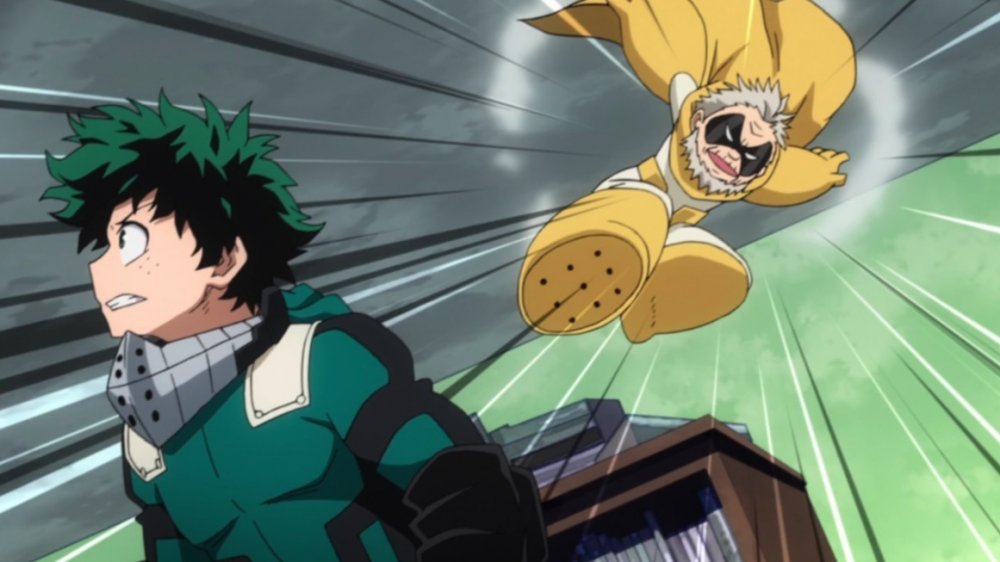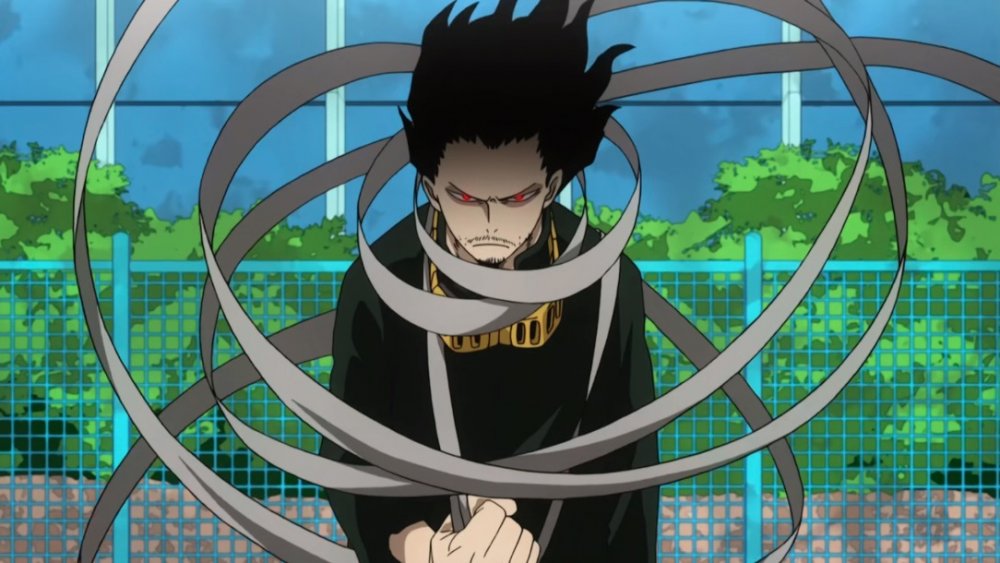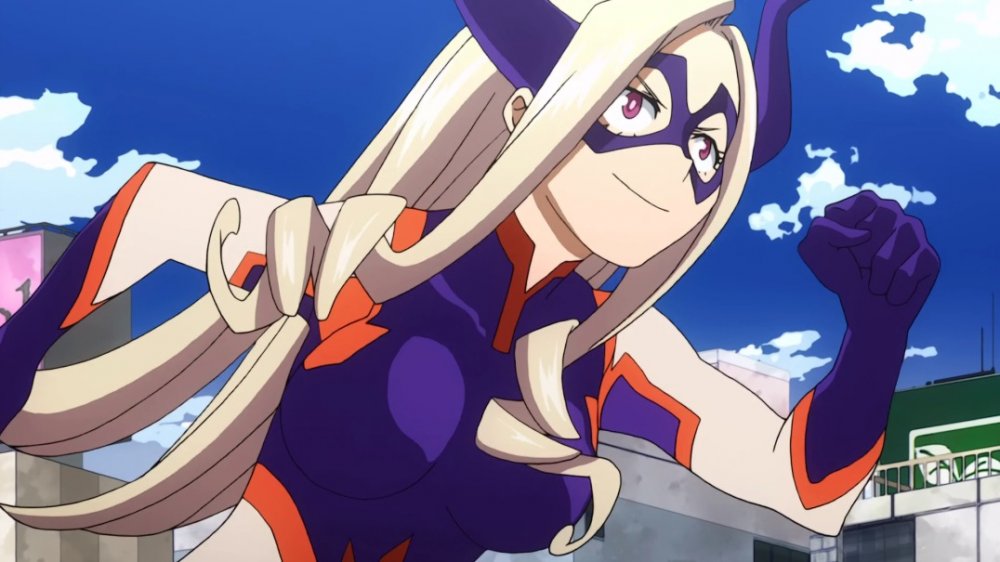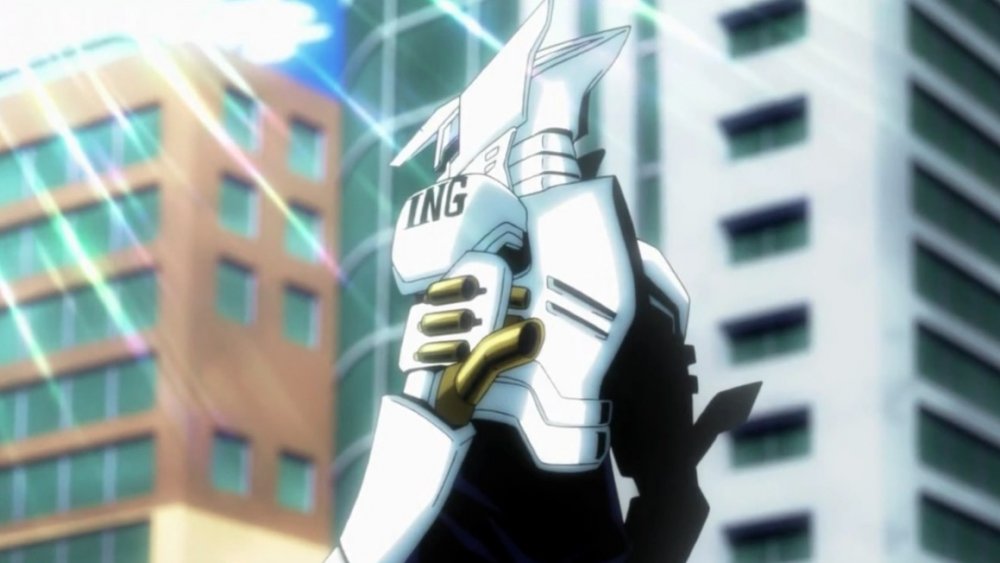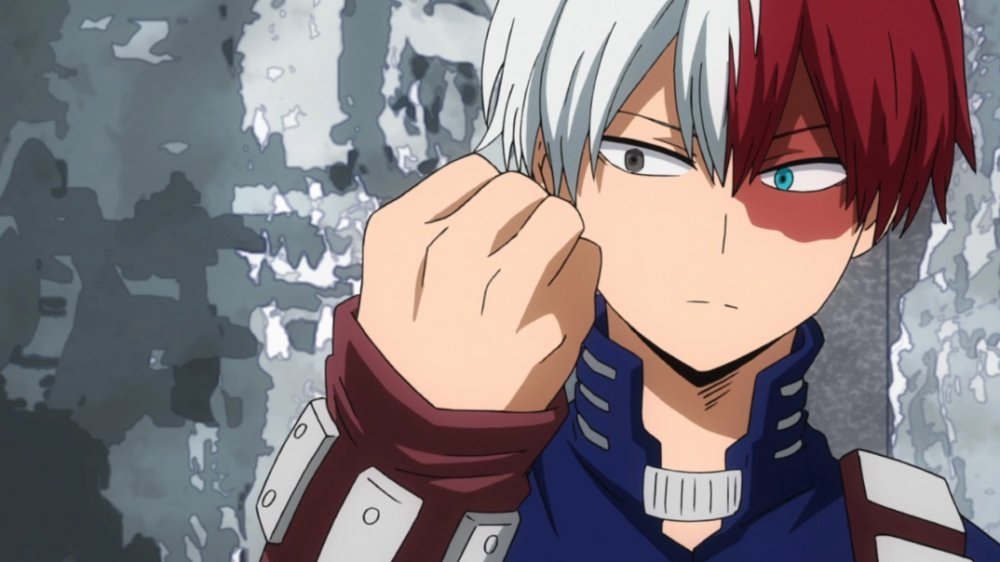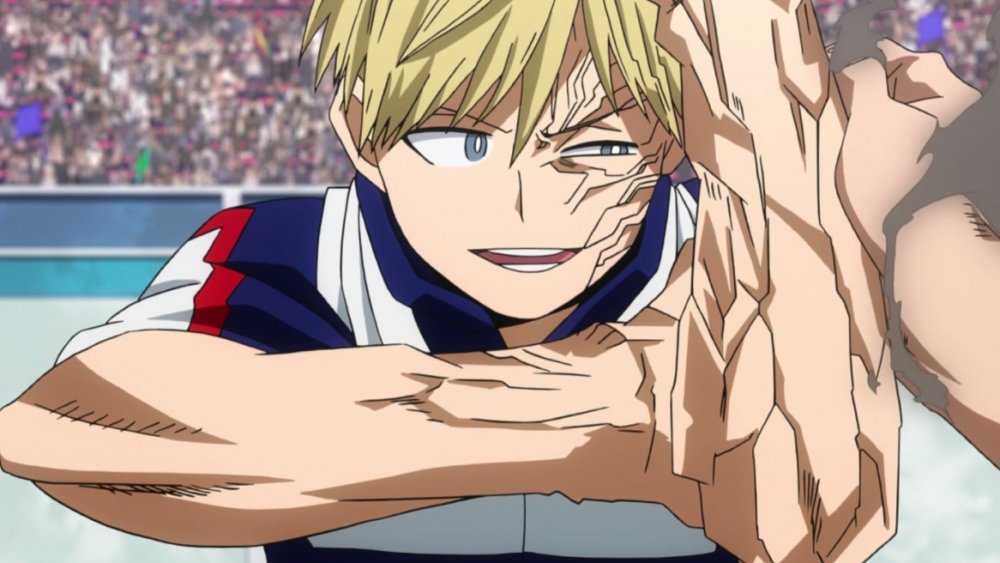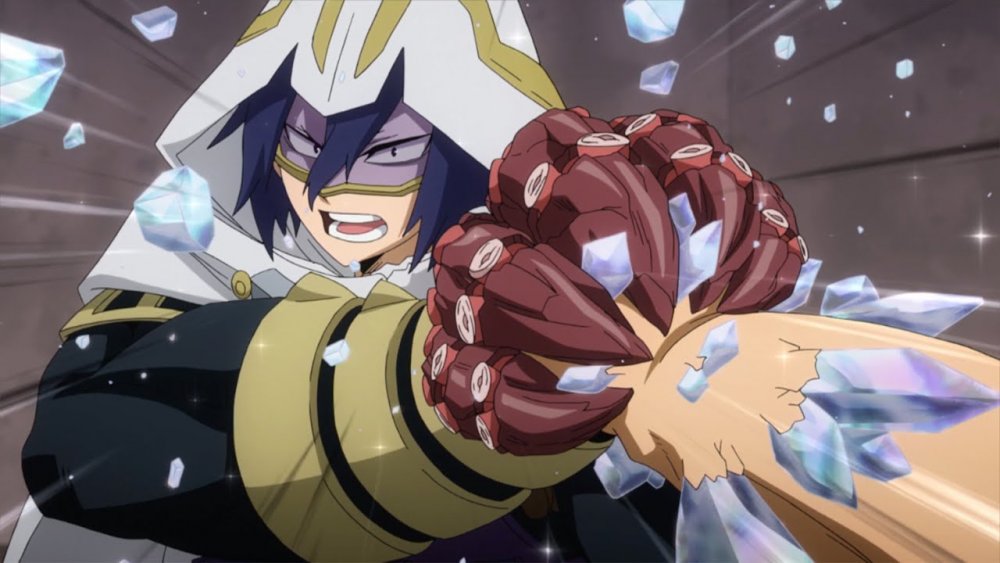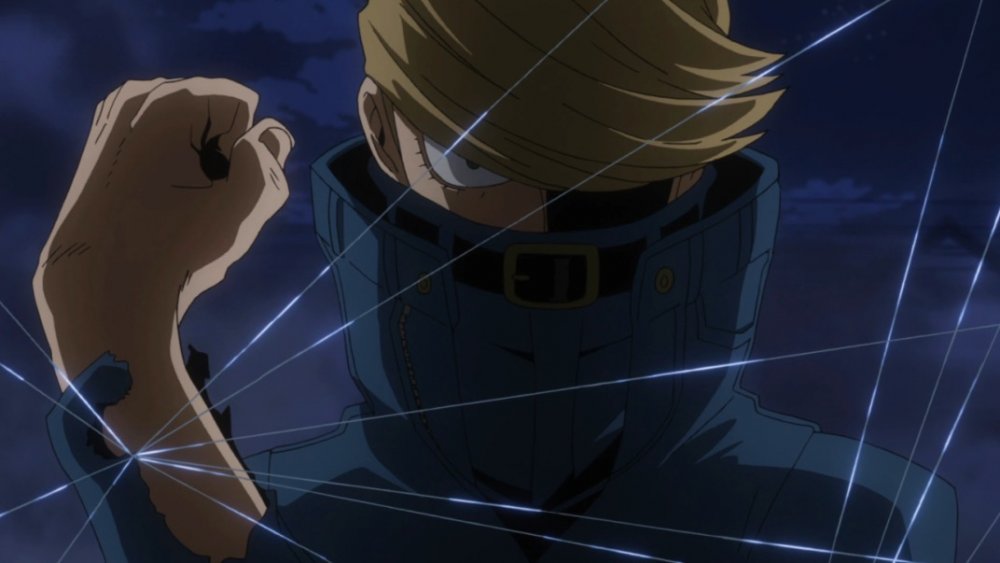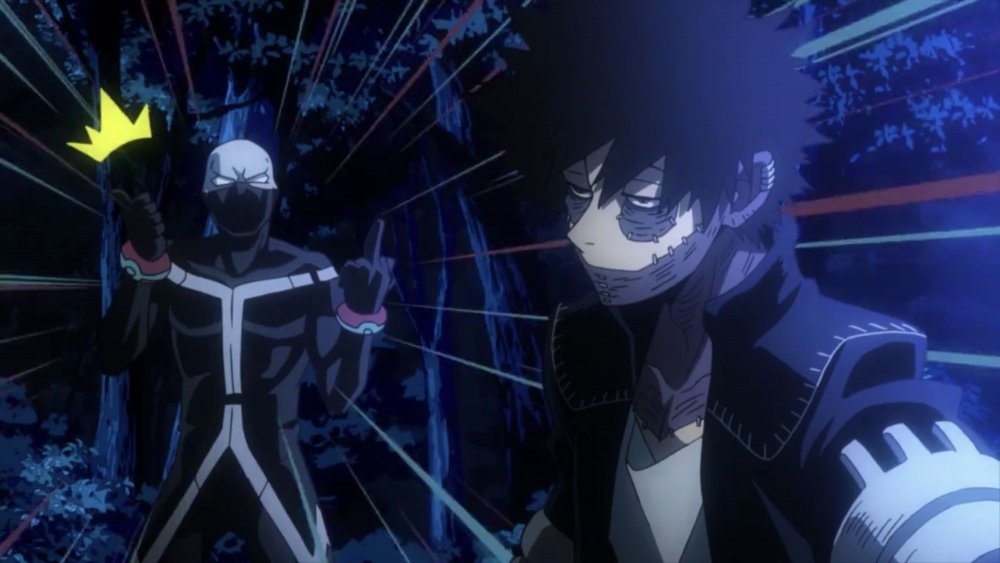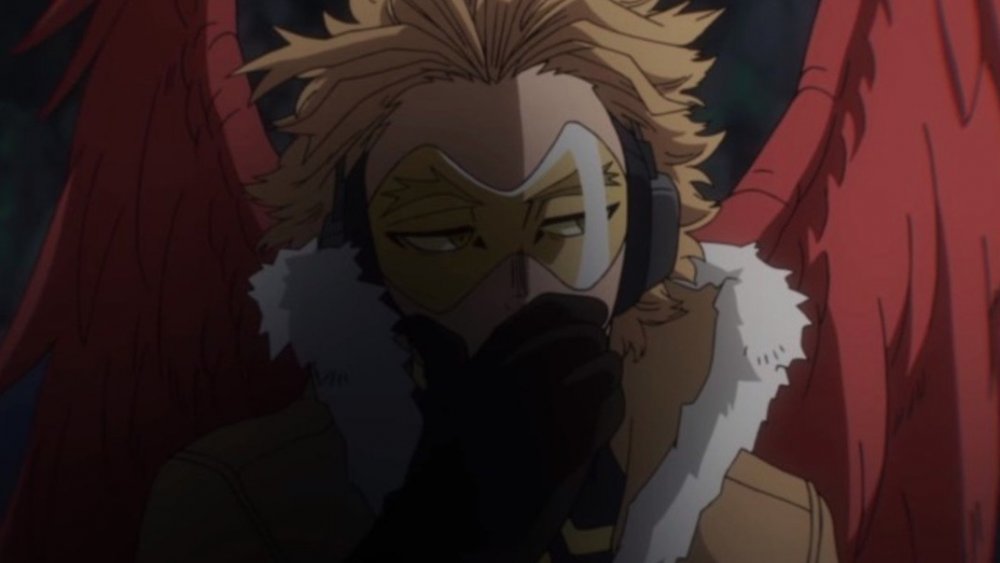My Hero Academia Quirks Ranked Worst To Best
In the world of My Hero Academia, nearly 80 percent of the population have inborn superpowers called quirks. These meta abilities generally fall under three categories: Emitter, Transformation, and Heteromorphic. Heteromorphic types are always partially active, usually in some physical sense (think of the Thing from the Fantastic Four), Transformation types transform like the Hulk, and Emitter types basically do everything else, from shooting lasers to softening the ground. Quirk-y people also usually inherit some form of one or both of their parents' quirks, or just manifest an entirely unique power. With such a huge population of super-powered individuals, the world of My Hero Academia, somewhat predictably, has a ridiculous number of weird power combinations.
These superpowers run the gamut from the standard Superman-esque powerset to the completely bizarre. Even in a world where you're almost guaranteed to have some sort of odd power, not all quirks are created equal. For every hero who can fly or stick to walls, there are plenty of people in My Hero Academia who just have minor telekinesis or are literally a talking mouse. With that said, we're ranking some of the best and worst quirks in My Hero Academia — heroes, villains, students, and vigilantes included.
Minoru Mineta's Pop Off is gross
Minoru Mineta has one of the worst superpowers in all of anime, so, naturally, he lands on the bottom of this list. Mineta has the ability to throw giant sticky balls that grow on his head in place of hair. The balls stick to whatever surface they land on, but Mineta himself bounces right off. Already, we're off to a bad start. The idea of throwing sticky balls that grow out of your scalp is viscerally disturbing in a way that might make David Cronenberg flinch in disgust, especially when Mineta's superhero costume has to be made out of his own body parts in order to keep his clothes from sticking to his... well, balls. That's basically a slightly more appropriate Buffalo Bill skin suit.
The worst part, however, is the side effect that comes from throwing too many of his hair balls. If Mineta overuses his quirk, his head starts to bleed, implying that his balls are closer in composition to skin than hair. All in all, it's a deeply disturbing quirk that's gross enough to offset even the faintest possibility of usefulness.
Ojiro's quirk is tail
It might seem strange for a quirk with so few downsides to land on the tail-end of this list, but by the same token, Mashirao Ojiro's quirk has no upsides, either. It's just a tail. In fairness, it's a tail that he has enough control over to whip around and smack villains with, but compared to the most powerful and most bizarre quirks in My Hero Academia, his superpower is just boring. In fact, the plainness of his Quirk is about as much character as Ojiro gets. Pretty much his entire role in the anime so far has been trying to accommodate for his boring quirk with martial arts and hard work. When your entire personality is rooted in how boring your superpower is, that's when you know you've lost the genetic lottery. In fact, the only obvious use for a prehensile tail we can think of is opening doors when you're holding two glasses of water. Although, to be fair, those glasses of water could be half-full or half-empty depending on how you look at it. After all, there's no need to live life with your tail between your legs.
Mirio Togata's Permeation has some big drawbacks
Mirio Togata is one of the most impressive heroes in My Hero Academia. Trained by the pro hero Nighteye and considered one of the Big Three of U.A. High School's upperclassmen, Mirio seems (at least at first) to be the platonic ideal of an All Might successor. Most impressively, he does it all with a Quirk that's much worse than he makes it look. With his Permeation Quirk, Mirio can become completely intangible; when he becomes tangible inside of a solid object, he's rocketed out of that object at high speed. Much like Marvel's Kitty Pryde, another intangible superhero, Mirio supplements his phasing powers with martial arts mastery and plenty of intelligence.
You might be wondering why such a useful power comes so low on the list. The reason is simple: unlike the X-Men's Kitty Pryde, who simply becomes untouchable, Mirio goes blind, deaf, and loses the ability to breathe when he phases. Basically, the only thing he feels is a vague sense of falling, which, combined with his tendency to phase into the ground, sounds like a truly awful pairing for claustrophobics and basiphobics alike. My Hero Academia's always been clear that it's not the quirk that makes the hero, and Mirio's competence is actually impressive in spite of his powerful quirk.
Spinner is a lizard
Who hasn't fantasized about swinging through the air and climbing up walls like Spider-Man? The freedom of movement, the defiance of gravity, the "thwip" sound of webbing... there's a reason that the character is so popular with children and adults alike. Unfortunately, My Hero Academia's Spinner seems like a Spider-Man wish fulfillment fantasy gone wrong. He can stick to walls, but that's because he's basically a lizard man. In fact, he seems less like Spider-Man and more like one of the members of the similarly New York-based superhero team, the Teenage Mutant Ninja Turtles.
In a world where kids have navel lasers and sugar-powered super-strength, the ability to look like a big lizard just seems sad. Some of the other characters have inherited animal features, but they also get cool powers of their own. Tokoyami has a bird head, but he also has a shadow creature that can fly him around. Koda has a rock head, but he can talk to animals. Even another reptile mutant, Tsuyu, has a long tongue, acidic vomit, and can camouflage herself with her surroundings. Compared to any of those, Spinner's ability to look like the TMNT OC you drew when you were a teenager just doesn't measure up.
The Crawler can just slide, baby
Not all quirks make one suitable for superhero work; that's how the world of My Hero Academia can have 80% of its world population possess superpowers and still make superheroing a rarefied profession. Considering the dangers of said profession, there are some powers that just don't seem all that useful. That's certainly the case with Koichi Haimawari, who has the ability to slide along surfaces as long as three of his limbs are touching that surface. It's not a bad power by any stretch — it sure seems faster and more convenient than walking or biking around — but it's not the kind of power that strikes fear into the hearts of evildoers. That he's able to make things work (somewhat) as an unofficial vigilante is really a credit to his hard work and kindness. As fun as it might be to slide up walls and down slopes, this quirk is ultimately not all that different from a portable bicycle.
Mei Hatsume's Zoom lets her see clearly once the rain is gone
It's not always the case that the heroes and villains of My Hero Academia always use their quirks while performing their superhuman actions; for example, many of Eraserhead's most impressive physical feats rely on his binding cloth, instead of his actual power-erasing quirk. The world of MHA is full of high-tech gadgets and weird technology that heroes and villains can use if they weren't lucky enough to be blessed with an exceptionally useful quirk. Of course, someone has to design those interesting gadgets and weapons, which is where Mei Hatsume comes in. She attends U-A to learn how to make Support Equipment, MHA's in-universe term for utility belts, costumes, and super-weapons.
It's no surprise that her focus is on the Support side of things since her quirk is pretty boring. Hatsume's Zoom quirk lets her vision zoom in any object that she's looking at up to five kilometers away (that's about 3 miles for metric system haters). It's not a bad quirk, but it's not really a good one either. No wonder Hatsume chose a career path that has almost nothing to do with it.
Gran Torino's Quirk is a breath of fresh air
Every hero needs a crotchety mentor, and they don't come much more crotchety or wise than Gran Torino. The retired pro hero lent his wisdom to both Deku and a young All Might once upon a time, and even in his old age, has helped out the main roster of heroes on multiple occasions. Gran Torino's proved himself to be a powerful combatant multiple times, and his Jet quirk is seemingly a major factor. It allows him to shoot air from the soles of his feet, giving him incredible speed and agility as he dashes around and delivers high-velocity punches.
So why isn't he higher on this list? As it turns out, that speed has to come from somewhere. Gran Torino's quirk shoots air out of his feet, but it's the same air he uses to breathe. That's some incredible lung strength, but it means that there's a hard limit to how often and how much he can use his quirk. After all, you try holding your breath while sprinting and throwing punches and see how long you can last. Still, you could say that his quirk is a breath of fresh air compared to the more outlandish ones out there.
Eraserhead can erase quirks
The old adage that "those who can, do, those who can't, teach" might be true when it comes to Shoto Aizawa, a.k.a. the hero Eraserhead. Aizawa is the homeroom teacher for Class 1-A at U.A. High School, and despite his downer attitude, he is an excellent resource for his superpowered students. It's somewhat ironic that he's so helpful in explaining how best to use bizarre quirks, since his own quirk is about as rudimentary as it gets.
Aizawa can temporarily halt the activation of quirks as long as he keeps his eyes open after looking at a quirk user. As soon as he blinks, the effect ends. It doesn't affect mutant types like Spinner or Ojiro, but it would stop the Crawler from sliding or Shoto from controlling fire and ice. That's a pretty useful power in the world of My Hero Academia, which is packed to the brim with quirk users of all type. The ability to shut down a villain before they start doing their villainous acts is solid, but that's all it does. Ultimately, a quirk that depends so much on the presence of other quirk users to be effective makes this a middle-of-the-road power.
Mt. Lady can become giant
Who among us can say that they've never stomped through sand castles or miniature cities pretending to breathe nuclear fire while humming Blue Oyster Cult's second-best song? It's an enticing fantasy, and one that the superhero Mt. Lady can live every day. As you might expect from her punny name, Mt. Lady can grow to giant size with her Gigantification quirk. Unfortunately, it's only half as useful as it sounds.
Mt. Lady can grow to giant size, but she doesn't have the ability to grow and shrink; she only has the ability to grow to her giant size and back to regular human size. That seems like a recipe for disaster in metropolitan areas, and the lack of control means that Gigantification is unlikely to land in the top spot of any Most Desired Superpower list. Still, we'd be lying if we said that we didn't want to act out our own Tom Hanks in Big fantasies "to be big."
Ingenium is fast
Is there a superpower more viscerally thrilling than being able to run at high speeds? If 80 years of Flash comics have taught us anything, the answer's no. We already have at least one super-speedster in the My Hero Academia cast in the form of U-A student Tenya Iida, but his Engine quirk is still revving up in the anime. Instead, his brother, the pro hero Ingenium, has a much more powerful quirk at the moment. Instead of powerful engines on his legs like his younger brother, Ingenium has engines on his arms, letting him blast through the air like the world's fastest Naruto Runner.
However, the biggest reason that Ingenium lands on this list and his brother doesn't? Running with your legs is terrible. No one actually likes to run. If you could just stick your arms out to the side and get the same speed going, wouldn't you rather do that?
No obvious drawbacks to Shoto Todoroki's Half-Cold Half Hot quirk
Just as Poison once sang, every rose has its thorn. In less flowery terms, it means that every joy comes with sorrow, and every bit of happiness comes with some pain. Fittingly, in the world of My Hero Academia, quirks usually come with a drawback or weakness — Bakugo's explosive sweat requires him to actually sweat, Tsuyu gets lazy in the cold, and Spinner is a lizard. That's not something Shoto Todoroki has to worry about. His quirk allows him to control fire and ice to an almost unlimited extent. On the right side of his body, he generates ice, while on the left, he can control fire. Granted, overusing one half of his body reflects that increase or decrease in temperature onto his own body, but just switching to the other half regulates his own temperature back to normal.
Even in the world of My Hero Academia, Todoroki's quirk is absurdly powerful. In fact, its existence is explicitly due to active effort on his father's part in order to engineer an ultra-powerful heir. However, putting Todoroki's tragic superhero origin aside, we can't find any particular issue with this ultra-powerful quirk. We're not going to play hot and cold here; this quirk is worth getting fired up about.
Neito Monoma is a copycat
Copycat superheroes have existed in superhero fiction almost as long as superpowers. From Mimic to Taskmaster to Amazo, there's just something innately satisfying about seeing someone copy and combine familiar superpowers in new ways. Since My Hero Academia never shies away from a good superhero fictional trope, there is, of course, a copycat quirk wielder. The catch is that he's pretty undeniably heroic, even if he's kind of a jerk about it.
Neito Monoma is a U-A student with the ability to copy the quirk of anyone he touches. He can copy up to four abilities, and use any one ability at a time for up to ten minutes before he needs to physically touch them again. While that's not much use out in the real world, Monoma's Copycat quirk is extraordinarily useful in the quirk-filled world of My Hero Academia. Being able to copy up to four powers at a time with a touch makes Monoma an incredibly dangerous opponent in a melee. What's more, knowledge of his quirk only makes him more dangerous, since he can throw in bluffs to confuse clever enemies. The only real drawback to his quirk (besides the time limit) is that he can only make use of quirks that don't depend on external power sources. Fat Gum's Fat Absorption quirk wouldn't be possible for the skinny Monoma, and so on.
Tamaki Amajiki is what he eats
A balanced diet is important to living your best life. For Tamaki Amajiki, a balanced diet is particularly important to living his best superhero life. As the hero Suneater, Tamaki has the ability to manifest characteristics of whatever he eats as a part of his own body. That means that if he eats clams or octopus, he can turn parts of his body into tentacles or clam shells. If he eats a bird, he can grow wings and fly. The size, number of manifestations, and exact features of the food he wants to use are entirely up to him.
While it's an incredibly weird-looking quirk to have, it's undeniably a useful one. Hit up an all-you-can-eat fish buffet, and you could probably swim faster than Michael Phelps. Eat a few plates of chicken, and you can fly around. Tamaki's power isn't even limited to conventional food, either. At one point, he eats some crystals created by another quirk user in order to make his own flesh into crystals. As long as you've got an open mind when it comes to the tenets of transhumanism, it's hard to see a problem with this odd quirk.
Best Jeanist's quirk is one of the best
In My Hero Academia, the most powerful quirks paradoxically tend to depend on other people; for example, the major villain of the series is All-For-One, a quirk user that can steal and give out quirks whenever he pleases. That's a quirk that depends on other people — specifically, quirk users — to really become powerful. Another good example of teamwork making the dream work is Best Jeanist's Fiber Master quirk, which lets him control individual threads of fiber. That makes him nearly unstoppable against anyone wearing clothes, which thankfully for Never Nudes, is nearly everyone.
Best Jeanist has some minor drawbacks to his quirk: for one, the type of thread influences how easily he's able to control it (denim is the easiest to use). Still, it's one of the weirdest and most useful quirks in all of the My Hero Academia universe. Unless he goes up against a supervillainous nudist colony, Best Jeanist is one of the best. No wonder he managed to take the spot of Number Three hero in Japan.
Twice is twice as good
The villain Twice has a quirk so powerful that, for most of his time in My Hero Academia, there was a self-imposed limit. Twice can make an exact duplicate of anything — living, dead, organic, or inorganic — as long as he knows the exact measurements. He's limited to two doubles at a time, but those doubles have their own abilities and will. That means that, functionally, he doesn't have any limits when it comes to cloning himself. He can clone himself, and then that clone can clone himself, and then that clone's clone can clone himself, and so on infinitely.
Beyond its use in making personal armies, it's the perfect cooperative quirk with other villains, since Twice can make a clone of himself and a clone of another villain, which can likewise repeat seemingly infinitely. The only real reason that My Hero Academia isn't entirely about the world's heroes uniting against this seemingly ultra-powerful villain is that Twice spends most of his time completely insane as a result of cloning himself too much. He didn't know if he was the original clone and spent years worrying that he was just his own doppelganger. As horrifying as that might be, there's a pretty easy solution: just write numbers on all your clones' heads, and it doesn't seem like identity confusion will ever be a problem.
Hawks gets to be a bird, gets to fly away
Flying has been a core aspect of the superhero fantasy since nearly the inception of the genre. Superman might have started out leaping tall buildings in a single bound, but his ability to fly is a core part of his appeal as the platonic ideal of the superhero. There are a few characters in My Hero Academia who can fly (or at least blast forward like a jet), but the hero Hawks is one of the few to make flying through the air look as fun as it probably is.
Just like Nelly Furtado, Hawks is like a bird, and he can fly away. His Fierce Wings quirk allows him to control the individual feathers on the large wings growing out of his back. Each feather is incredibly strong and individually controlled, which basically gives him a superpower set similar to telekinesis. What's more, each feather can detect changes in the air, allowing Hawks to locate or eavesdrop on people with only a single feather. His actual flying speed with his wings seems closer to a plane than a pigeon, and the only real drawback to his quirk is that his feathers take a day or two to regenerate if they're destroyed. Look, up in the sky! It's a bird! It's a plane! It's the best Quirk in My Hero Academia.
